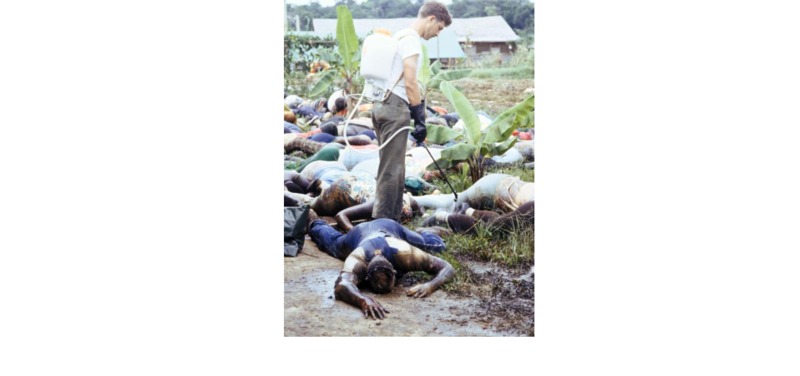Jonestown: The Path to Mass Suicide
The Jonestown cult started with their leader Jim Jones, an Indiana native born in 1931, who started a Pentecostal congregation in Indianapolis called the Peoples Temple in 1955. After gaining a small following he moved his congregation to California where he opened churches in San Francisco and Los Angeles, targeting largely black communities, as one of the main practices was care for the marginalized in society. The Peoples Temple theology was “a mix of the ethical teaching of Jesus with the social critique of Marx” and Jones called this theology apostolic socialism. (Moore 8). Other focuses were apocalypticism, reincarnation and communal living. Jones said Jesus lived communally, so, therefore, they should live communally, where they did so in California. The Peoples Temple then shifted to Guyana where the mass suicide occurred. Jones encouraged the move to Guyana because it “was to be the Promised Land of security and peace away from the corrupting influence of American society and the persecution of opponents” (Moore 9). Jones thought the world would end through nuclear war or fascist takeover which also motivated the move to Guyana.
Seventy to eighty percent of the residents were black, and two-thirds of the population were women. Understanding the population in the Peoples Temple is important because it gives insight into why people were convinced to join the Peoples Temple, move to Guyana, and commit mass suicide for the cult. The two main motivators were a utopian desire with the promise of equality, of race and sex, and socioeconomic needs as the Peoples Temple gave food, shelter, and economic security. In cults, the promise for a better life convinces people to join and believe that whatever they are doing in the cult is going to enhance their lives.
In 1978 a congressman, Leo Ryan, went to visit and inspect Jonestown along with journalists, a film crew, and members of concerned relatives. As they visited and were leaving, several people asked to live with Ryan, which caused a fight to break out and Ryan and three journalists to die of gunfire. This was the catalyst for the “revolutionary suicide”, Jones and the other leaders had been planning. On the commune, the members had to work in the fields all day in combination with attending long meetings. The compound was always surrounded by armed guards, but despite the gruesome forced conditions most people stayed loyal and believed in the cult. On the day of the mass suicide, people were told they could either drink the punch laced with cyanide or get shot by a guard. Nine hundred and seventeen people committed the suicide, as seen in figure 1, and were disinfected and transported back to the US to be buried. This was the largest number of deaths at the same time until 9/11. Only 87 members survived and lived to share their experiences of Jonestown, each person adding something new to the understanding of the cult, and why people were drawn into the cult. The belief in the cult and the hope for equality was enough for hundreds of people to commit suicide.
Works Cited
Moore, Rebecca, et al. Peoples Temple and Black Religion in America. Indiana University Press, 2004. EBSCOhost, proxy-remote.galib.uga.edu/login?url=http://search.ebscohost.com/login.aspx?direct=true&db=nlebk&AN=141131&site=eds-live.
"Peoples Temple and the Jonestown Massacre, November 18, 1978." DISCovering U.S. History, Gale, 1997. Student Resources In Context, http://link.galegroup.com.proxy-remote.galib.uga.edu/apps/doc/BT2104240505/SUIC?u=uga&sid=SUIC&xid=1709f684. Accessed 13 Nov. 2018.
